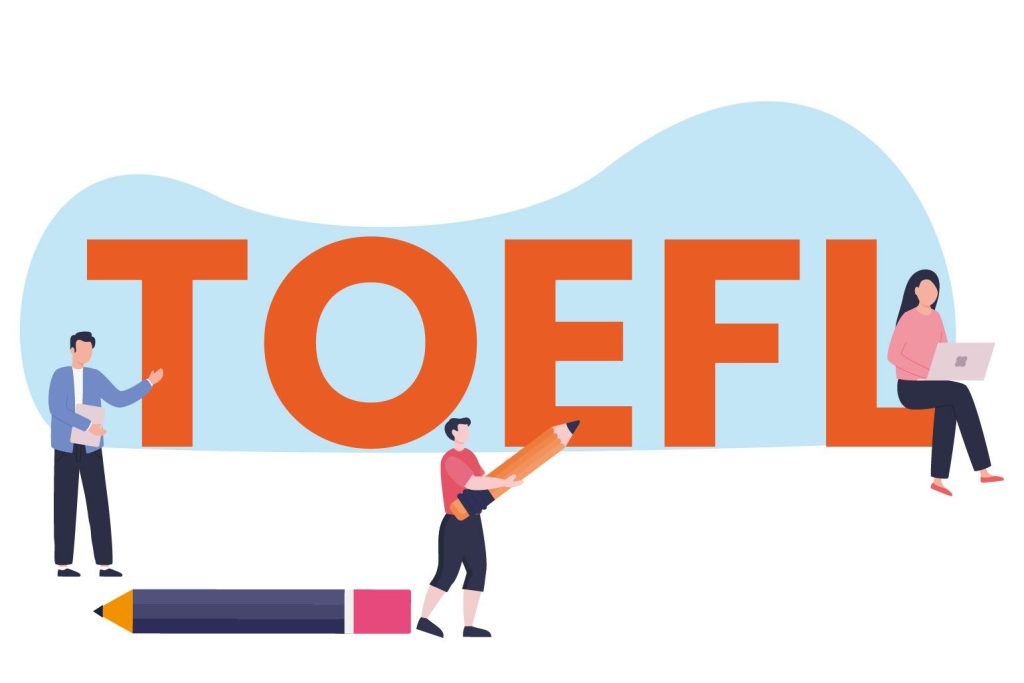
The TOEFL is another widely recognised English language proficiency test, similar to IELTS. It is often required for admission to English-speaking universities, especially in the United States.
Here are some key points about TOEFL:
Purpose:
TOEFL measures the ability of non-native English speakers to use and understand English in an academic setting.
Sections:
The test consists of four sections – Reading, Listening, Speaking, and Writing.
Format:
TOEFL is conducted online and is available in two formats: TOEFL iBT (Internet-based Test) and TOEFL PBT (Paper-based Test).
Scoring:
Scores are reported for each section, and the total score is on a scale of 0 to 120.
Accepted Worldwide:
Like IELTS, TOEFL scores are accepted by many universities, colleges, and institutions around the world

The TOEFL (Test of English as a Foreign Language) is chosen by individuals for several reasons:
– Many universities and academic institutions, particularly in the United States and Canada, require TOEFL scores as part of the admission process for international students.
– TOEFL is often used to assess the English language proficiency of non-native English speakers. It provides an objective measure of their ability to understand and use English in academic settings.
– TOEFL scores are widely recognized and accepted by universities and institutions around the world. It is a standardized measure that facilitates international communication and understanding.
– The TOEFL iBT (Internet-based Test) allows candidates to take the test online, making it accessible to a broad range of test-takers globally
– Some scholarship programs, especially in English-speaking countries, may require TOEFL scores as part of their application criteria
TOEFL scores may be required for visa applications, especially for study visas, in certain countries
In some fields, demonstrating proficiency in English through TOEFL may be a requirement for professional certification or licensing
– Preparing for TOEFL can contribute to personal and academic development by improving language skills and confidence in using English
TOEFL Home Edition
The TOEFL Home Edition is an option offered by the Educational Testing Service (ETS) to take the TOEFL iBT (Internet-based Test) from the comfort of your home. This format was introduced to provide test-takers with flexibility, especially in situations where test centers may be inaccessible or during times of global challenges, such as the COVID-19 pandemic.
Here are key points about TOEFL Home Edition:
TOEFL Home Edition allows you to take the test entirely online. You can complete the Reading, Listening, Speaking, and Writing sections from your own computer.
– You need a computer with specific system requirements, a reliable internet connection, and the ETS-approved browser to take the TOEFL Home Edition
– ETS employs various security measures to maintain the integrity of the test, including live human proctors, AI technology, and recording your test session
– Test-takers can choose from a range of available time slots to schedule their TOEFL Home Edition, providing more flexibility in choosing a time that suits them
– TOEFL Home Edition scores are accepted by universities and institutions just like scores from the traditional test center-based TOEFL iBT
It’s important to check the official TOEFL website or contact ETS directly for the most up-to-date information about the TOEFL Home Edition, including technical requirements, test format, and other relevant details.
TOEFL (Test of English as a Foreign Language) scores are widely accepted by universities and institutions around the world. Here are some examples of countries where TOEFL is commonly accepted:
United States:
– Many universities and colleges in the United States accept TOEFL scores for admission, especially for international students.
Canada:
– Canadian universities and colleges often recognize TOEFL scores as proof of English language proficiency for admission.
United Kingdom:
– Some universities in the United Kingdom accept TOEFL scores, although the more common test in the UK is often IELTS.
Australia:
– Australian universities and institutions frequently accept TOEFL scores for admission.
European Countries:
– Many universities in European countries accept TOEFL scores. However, requirements can vary, and some European countries may prefer other English proficiency tests.
Asian Countries:
– Universities in countries like Singapore, Japan, South Korea, and others often accept TOEFL scores for admission.
Middle East:
– Institutions in the Middle East, including countries like the United Arab Emirates, may accept TOEFL scores.
It’s important to note that acceptance of TOEFL can vary by institution and even by specific programs within institutions. Always check the specific English language proficiency requirements of the university or program you are interested in. The official TOEFL website and the admission offices of the respective institutions are good sources for accurate and up-to-date information on TOEFL acceptance.
